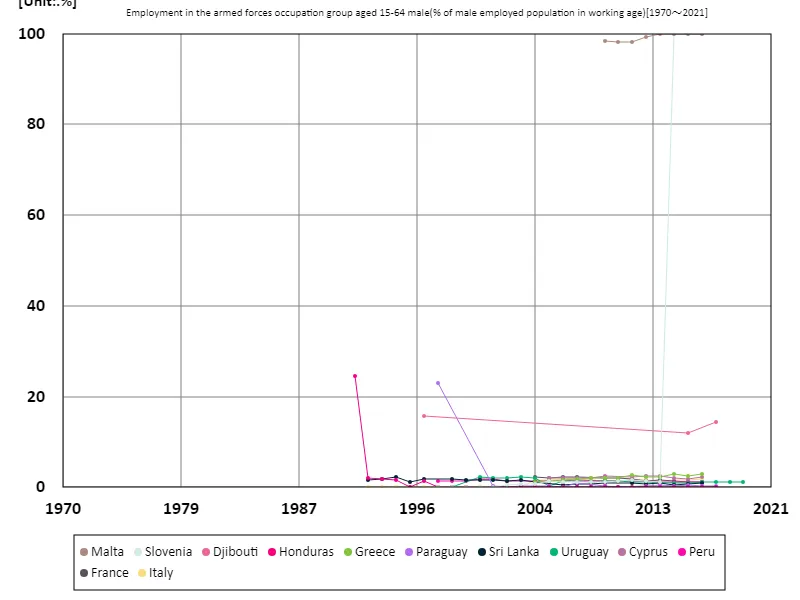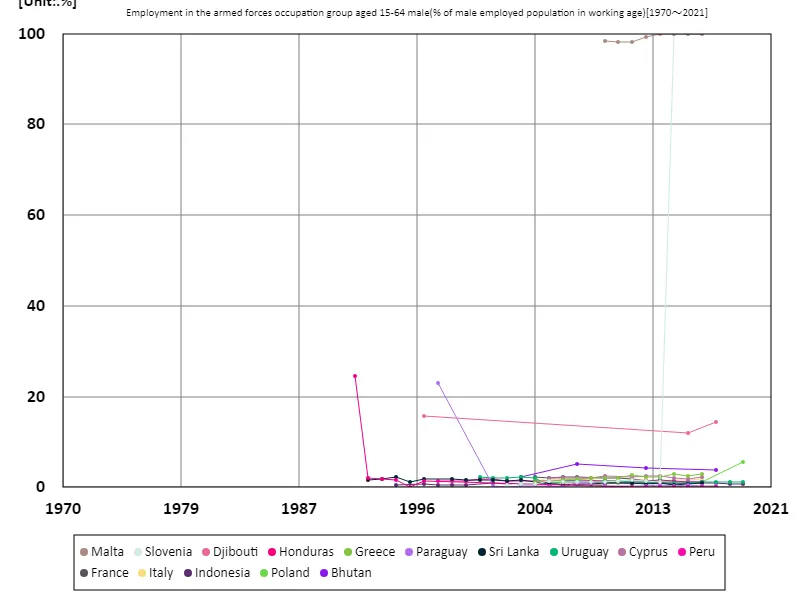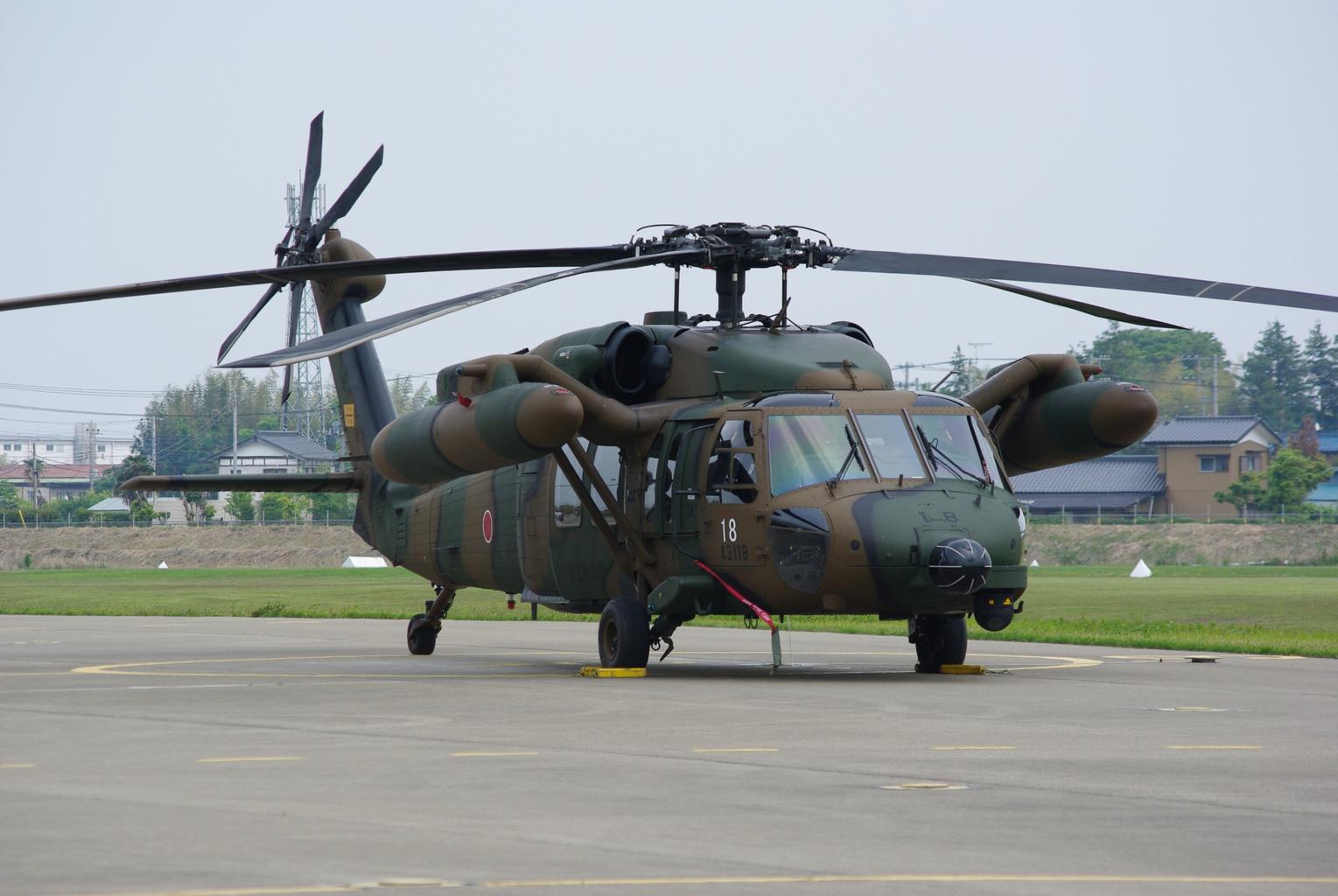- Abstract
- Employment rate for men aged 15-64 in military-related sectors (percentage of working-age men in the working population)
- Employment rate of men aged 15-64 in military-related sector (percentage of working-age male employed population) (Worldwide)
- Employment rate of men aged 15-64 in military-related sector (percentage of working-age males in the labour force) (World, latest year)
- Reference
Abstract
Based on recent data, employment rates in military-related sectors among men aged 15-64 vary significantly from country to country, with trends dependent on regional and national economic backgrounds and military policies. While 2019 data shows Uruguay has a high employment rate of 1.18%, this is also a relatively low percentage. These figures also suggest that Uruguay is a country with relatively few military-related jobs. Generally, countries with higher employment rates in the military-related sector are those with larger military budgets and more active military activities. On the other hand, economically stable countries or those with limited military spending tend to have relatively low employment rates in the military-related sector. Smaller economies and countries with more peaceful policies tend to have fewer military-related jobs and, as a result, lower employment rates. This reflects the abundance of employment opportunities in other parts of the economy and less need to rely on the military sector.
Employment rate for men aged 15-64 in military-related sectors (percentage of working-age men in the working population)
Looking back at data from 1991 to 2019, we see a notable trend in military-related employment rates for men ages 15-64. The 100% figure recorded by Malta in 2014 is highly unusual and represents an extreme situation in which the military-related sector actually offers employment opportunities to all working-age men. This could be due to an atypical policy being adopted by Malta, but it is currently at a similar 100% level compared to its peak, suggesting that the size and types of jobs in the military sector are stable. Generally, countries with high employment in the military-related sector are those experiencing war, regional tensions, or large military investments. On the other hand, economically stable countries and those with peaceful policies tend to have relatively low rates of military-related employment. Countries with such high employment rates indicate that military occupations play a key role in the labour market, which calls for a deeper dive into economic dependencies and policy impacts.


The maximum is 100%[2014] of Malta, and the current value is about 100%
Employment rate of men aged 15-64 in military-related sector (percentage of working-age male employed population) (Worldwide)
Looking at data from 1991 to 2019, some interesting trends emerge regarding military-related employment rates for men ages 15-64. In particular, Malta’s record of 100% in 2014 is exceptional. A 100% employment rate in the military-related sector is usually highly unusual, so Malta’s figure indicates that the country’s military sector employs all working-age males. This may be due to Malta’s unusual military policy and the fact that it had a very small military department. In general, employment rates in military-related sectors are strongly influenced by a country’s military situation, budget, and strategy. Countries experiencing war or regional tensions often have high employment rates, while countries at peace tend to have relatively low military employment rates. Malta’s data reflect a unique situation in which the military sector absorbed the country’s entire male working age population, and changes in military policy and the economic context must be taken into account. Overall, fluctuations in employment rates in military-related sectors are closely linked to changes in the international political and economic environment and military policies, and are an important indicator for understanding the situation in each country.


The maximum is 100%[2014] of Malta, and the current value is about 100%
Employment rate of men aged 15-64 in military-related sector (percentage of working-age males in the labour force) (World, latest year)
Based on 2021 data, the overall employment rate for military-related sectors for men ages 15-64 was a maximum of 2.03%, with an average of 1.22%, for a total of 3.67%. In particular, Gambia’s 2.03% indicates a relatively high level of employment in the military-related sector, a notable proportion compared to other countries. This reflects that the Gambia’s military sector employs a certain percentage of working-age men. Overall, we can see that employment rates in military-related sectors vary widely across countries. Countries with high employment rates often have relatively high military spending or the military sector plays a significant role in the economy. For example, a country with a high employment rate, such as The Gambia, may have a relatively important military sector in the country’s economic structure. Meanwhile, the average value of 1.22% indicates that many countries keep military-related employment relatively modest. The employment rate in the military-related sector is influenced by a country’s military policy, budget, and regional security situation, making it an indicator that shows significant differences due to economic background and policies. Analysing how changes in the international security situation and military budgets affect these employment rates is an important tool for understanding international economic and regional stability.


The maximum is 2.03% of Gambia, the average is 1.22%, and the total is 3.67%



Comments